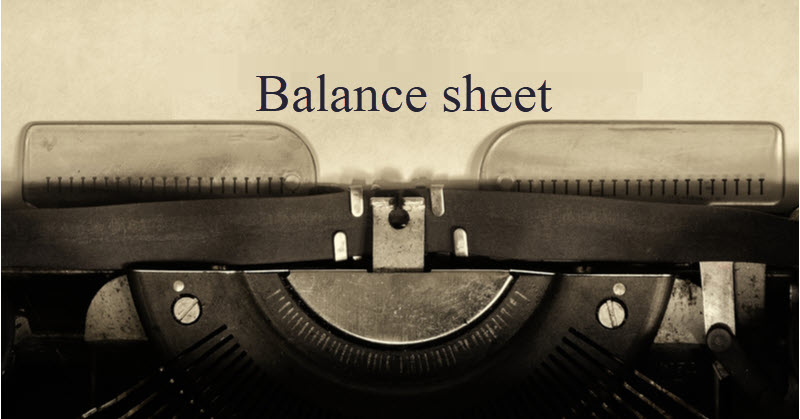Most times when I’ve seen business owners look at a balance sheet, they seem satisfied that the top and bottom numbers are equal. It’s almost as if they are checking their accountant’s work. “If those two numbers match; my accountant must have done a good job.”
What they don’t understand is that the balance sheet is the culmination of every single business decision they have ever made. It is the living history of the company on a single page, and it tells those who can read it if you have a good or bad company.
I believe the balance sheet is probably the most misunderstood financial statement seen by small business owners. Unlike the income statement, where the result is easy to understand, the balance sheet has no result. It’s just a snapshot of a moment in time. But if you learn just a few basics, the balance sheet can help you grow your company and increase your cash flow.
In this article, I’ll discuss how to take the first steps with a business owner who has largely ignored the balance sheet.
Give your clients a purpose for reviewing the balance sheet.
Have you ever wondered how the military gets young men and women to do seemingly impossible things? It’s because they appeal to the soldier’s sense of purpose. Instead of just telling a soldier to stand at a remote road intersection and not let anyone pass; the military goes a step further using a little-known technique that works.
They always give their missions out in 2-parts: a task and a purpose.
Instead of ordering the soldier to guard a road intersection, they give them the reason why it’s important. Here’s an example of a mission statement.
You will guard this road intersection to provide the rest of the unit with advanced warning of an attack by the enemy.
This distinction is critical for the mental readiness of the individual soldier because now they understand why they were placed in the position, and they don’t want to let the team down.
I think the same technique works in the business world as well. Instead of asking a client to review the balance sheet and let you know if they have questions. Try giving them a more specific task and a purpose. Here is an example.
Can you look at the balance sheet and let me know if the inventory balance looks correct so we can determine if it’s time to mark down some items to increase sales?
In this case, you have given your client a reason to look at the balance sheet to help them in their day-to-day business operations. You have given them enough guidance to feel confident in using the balance sheet beyond checking to see if the assets = the liabilities + equity.
Three balance sheet topics to discuss with your clients.
Here is the tough part for you. How do you describe the purpose in a way that motivates your client to take the balance sheet seriously? Here are a few examples of things you can use with clients that will assist in improving the overall health of their company.
Net worth
The basic premise of the balance sheet is to establish the net worth, or more importantly, calculate the difference between what you own and what you owe. It is an immediate snapshot of the health of the company and tells you if you are doing a good job or completely off track. A business owner can check their net worth to determine the quality of their investment in the company.
Access to cash
Another great use of the balance sheet is to find hidden cash. You’ve heard of liquidity. Well, basically we are talking about assets we can convert quickly to cash without devaluing them significantly. Have your clients look at the balance sheet to find out who they can collect from, or to locate underutilized assets, like older pieces of equipment they can sell for cash.
Track debt through the debt to equity ratio
Another great use of the balance sheet is to have your clients keep track of how much they owe and to identify opportunities to pay down debt when they are sitting on some extra cash. Debt can become a heavy burden on a small business, so it’s best to keep it as low as possible.
Have your client calculate the Debt to Equity ratio as a measurement of their own investment in the company. Total Liabilities divided by Total Equity tells them how much they have in the company compared to people they owe money to. As a rule of thumb, you want this number to be 2.5 or less. Meaning, for every dollar the owner has in the company, they have allowed creditors to put in $2.50 or less.
Learn more about cash flow management as a service.
The three examples above give you a starting point to help your clients use the balance sheet to find opportunities for growth. Remember, everyone wants to know why they are being asked to do something. A good way to help them understand is to give them a task and a purpose.
In addition to helping your clients understand their cash flow through balance sheet analysis, you also need to help them understand the income statement. Learning how to talk to your clients about the income statement (as well as the balance sheet) allows you to provide a high-value, entry-level coaching service that you can add to your existing clients.
Do you want to learn how to provide cash flow management as a service? If so, I invite you to join me as I teach Woodard's one-day Power Day on Cash Flow Management Essentials, where I will teach you the critical and essential cash flow concepts that your clients need to maximize their cash flow and profits. Enrollment will open soon.
.png?width=150&height=63&name=TWRlogo-regmark_blueblack%20(1).png)
.png)










Do you have questions about this article? Email us and let us know > info@woodard.com
Comments: